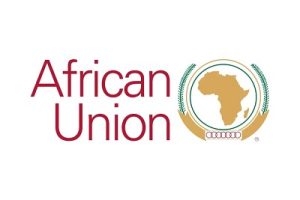BY STAFF REPORTER
The currently imminent threat of drought disaster has been among the top issues of various world media in the past couple of years. Still the issue has been aggravating ever since, and the countries of the region need to redouble efforts to seek sustainable solution for it. Their actions should focus on not only emergency relief supply but also uniting to secure the necessary financial support from concerned international institutions.
According to reliefweb.int, Communities in the Horn of Africa are facing the immediate threat of starvation, with forecasts indicating that the October-December 2022 rainy season is likely to underperform, marking the fifth consecutive failed season in parts of Ethiopia, Kenya and Somalia.
The October-December 2020, March-May 2021, October-December 2021 and March-May 2022 seasons were all marred by below-average rainfall, leaving large swathes of Somalia, southern and south-eastern Ethiopia, and northern and eastern Kenya facing the most prolonged drought in recent history, while the March-May 2022 rainy season was the driest on record in the last 70 years.
The 2020-2022 drought has now surpassed the horrific droughts in 2010-2011 and 2016-2017 in both duration and severity and will continue to deepen in the months ahead, with catastrophic consequences. The magnitude of the disaster at this moment is very high that the countries of the region can hardly address individually. Even working as a region, the effort to secure a meaningful outcome would be an uphill battle. Therefore they have to rush with time to tackle the problem on the earliest time possible before it evolves in to even worse level of catastrophe.
IGAD Drought Disaster Resilience and Sustainability Initiative Coordinator, Edmealem Shitaye, told ENA that starting from 2010 and 2011 some 47 million people have been highly food insecure and affected by drought.Climate change phenomena like El Niño and La Niña have continued to affect the region, he added. According to him, 70 percent of the IGAD region is arid and semi-arid, making it vulnerable to natural calamities like drought and flood.
“We solemnly call on the international community to help us prevent a major humanitarian disaster by committing requisite resources to save lives and livelihoods in the short-term, and continue investing in resilience building in the medium and long-term.” The overall efforts of countries in the region to sustainably address the harmful consequences of climate change induced global warming must receive due support either financial or technical.
As far as the region is suffering from a problem that is outcome of the global environmental disaster, the regional countries need to redouble efforts to seek global actions that is tantamount to the disaster facing them. In the meantime, countries of the region need to intensify efforts in their respective territories with a goal to fending of the impacts of climate change both temporarily and durably. For instance, Ethiopia has announced that it will continue to transplant massive level of seedlings in this rainy season.
For instance Ethiopia has been preparing to plant 6.3 billion seedlings during the upcoming rainy season as part of the national green legacy initiatives, Agriculture State Minister, Professor Eyasu Elias disclose. According to ENA, the State Minister in charge of the Natural Resources Development Division, the country has already prepared 5.4 billion seedlings.
Out of the total 6.3 billion seedlings 45 % are trees while the rest 55 % are fruits, animal fodder, and other vital plans. Over the last four years, some 25 billion seedlings, including trees, fruit, and cattle feeds have been planted as part of the national Green Legacy Initiative, it was learnt.
Beyond the responsibility to address the impacts of global warming in the most vulnerable region of the world, due consideration should be made to collaborate in the efforts against the humanitarian crisis in the region as it has been victim of simultaneous environmental and public health emergencies in the last couple of years.
Reliefweb.int report indicates that many drought-affected communities are struggling to cope with the cumulative consequences of other shocks, including conflict, flooding, COVID-19 and desert locusts. Previously, many of these communities were hit by the extreme rains and flooding which struck the region in 2019, and which was one of the drivers of the historical desert locust outbreak which began in late-2019.
It further noted that the Horn of Africa has also been negatively impacted by the deteriorating macroeconomic conditions and trade disruptions related to the war in Ukraine, at a time when households are still facing the effects of the COVID-19 pandemic on livelihoods and income sources. In addition, millions of people in Ethiopia and Somalia are affected by conflicts, which may also hinder people’s freedom of movement as they seek reprieve from the drought.
THE ETHIOPIAN HERALD TUESDAY 18 APRIL 2023





